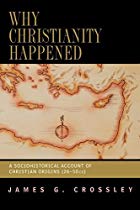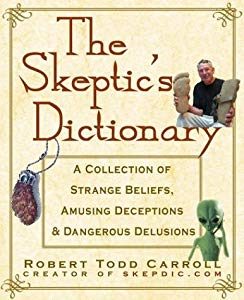
The model makes sense of the Gospels and the Gospels are the evidence for the model.
What century am I living in? My work ID card says I am in Singapore but my iphone map sometimes tells me I’m in Brazil. This is confusing enough, but I sometimes read books and websites by mainstream scholars that actually claim that the Enlightenment took humanity backwards and that it is rational and preferable to believe in the resurrection of Jesus, or at least in “something” that we can’t identify that amounts to the same thing. I’d be happy enough to put this down to just another one of those quirky surveys about the insularity of the U.S., but sometimes I find even UK and European scholars saying the same thing. And most recently, I have learned that a few scholars who pride themselves on their “independent” and “secular” approach to biblical studies have embraced wholesale (and in defiance of secular logical norms for assessing evidence for historical events) the faith-based models and assumptions that have monopolized biblical studies for generations.
Von Ranke and E. H. Carr spinning in their graves
The principle that governs what is historical fact seems to be this: If a name or event is mentioned in the New Testament, then we are entitled (on faith?) to accept that it has some historical core or origin if we can rationalize it within the constraints of what we can assess about Jewish customs, textual comparisons of the story and other literary and linguistic details (form criticism is an optional extra), and if we can find a persuasive role for the detail within the model of how we believe Christianity must have started.
And that model is built (by circularity) upon other details that have gone through the same processes of rationalization.
The Eusebian-Gospels-Acts model is all there ever was and is
Miraculous and supernatural details are to be ignored — or embraced as something “we can’t explain” — even if the stories make very little sense, or are even nonsense, without them. An example of the latter is how biblical historians sometimes try to argue for the rise of Christianity without a literal resurrection. It is said that Jesus came to be worshiped as a result of some “inexplicable” experience of the disciples despite the crucifixion of Jesus as a criminal.
Some historians have attempted a more naturalistic explanation — not of the rise of Christianity per se, but of an explanation of the inherited core Gospel-Acts model of how Christianity is said to have begun. The question of Christian origins is not generally open to a fresh start with a reexamination of what models the evidence might permit. The question of origins is chained to the model of origins that is found at the “core” of the Gospels and Acts.
That is, there was a John the Baptist movement, an ensuing Jesus movement, (the details of this Jesus and the movement are open to as many options as there are imaginations plied to this study, it seems), a crucifixion by Pilate and a belief in a resurrection soon afterwards, followed by a mission to Jews and Gentiles, with various conflicts following until some sort of rough harmony was finally settled (except for all the others who were doomed to oblivion by being rejected from what became the “catholic church”.)
And the Gospels were attempts to record something of this event, with redactions over time, and mixed of course with a lot of theological stuffing.
I gather that that basic model is not open to question by most biblical scholars.
Imagine the whole world was allowed to read only one narrative
Not even the miraculous — and how the narrative relies on the miraculous to make sense of things — can shake confidence in the belief that it has some historical core. In addressing Bauckham’s attempt to argue that the Gospels emulate ancient “historiographical best practice” in his “Jesus and the Eyewitnesses”, G. A. Wells writes:
So because, for instance, Thucydides gave a sober account of political and military situations in which he personally was to some extent involved, the authors of miracle-ridden Christian apologetic treatises “must” have written on the same basis. . . . The New Testament is surely more likely to be comparable with other sacred works of antiquity than with ancient accounts of then recent human history. In the opening chapters of Mark Jesus is addressed by the heavenly spirit as “my beloved son”, is then waited on by angels in the wilderness, recognized as “the holy one of God” by the spirits of evil he defeats, cures a leper instantaneously, has the divine power of forgiving sins, and claims to be lord of the sabbath. Such writing is not comparable with Thucydides’s account of the Peloponnesian Waror with Tacitus’s portrayal of the struggles and intrigues in the empire in the century before he himself wrote.” (p. 320, “Cutting Jesus Down to Size”)
Despite this character of the narrative of Gospels-Acts, the model of Christian origins described above is based entirely on the self-testimony of its narrative. And as the much maligned Earl Doherty has pointed out, the Gospels (and Acts) were very much a small sample of early Christian literature. But their relatively small sampling has not hindered their ability to so totally dominate (“tyrannize”) the way we read all the other early Christian writings.
One often reads a study of some detail in Paul’s epistles, for example, being explained by reference to the much later Gospel narratives. Progressions of thought or theology are traced from Paul to Mark and then on through the other Gospels — all as if they are related in evolutionary development of a single species. Rarely is the possibility entertained that such differences represent warring or simply scarcely connected factions. The Eusebian model of organic harmony (as per Acts?) must more or less prevail.
The problem is that without the Gospels and Acts we have no ready-made narrative outline to explain Christianity. It is the only story we have. To question it too radically would mean we would have to start the whole enterprise of understanding Christian origins from scratch.
It is truly a most remarkable thing that mainstream biblical scholars, including “independent” and secular ones, can assert that this Gospel-Acts model is the only one that makes sense of the evidence. It is the only one they know. Any other is routinely ridiculed or worse.

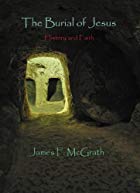

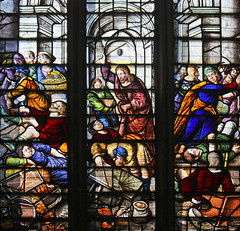
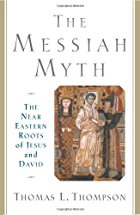 Thomas L. Thompson has hit the nail on the head when he explains why “historians” of the Bible place so much emphasis on oral tradition. Oral tradition, of course, is not a fact. That it existed cannot be verified. It is nothing more than a hypothesis, or really more an assumption of necessity than a hypothesis. And the necessity is the trap that scholars have built for themselves by assuming — the great unquestionable assumption — that the gospels ultimately get their stories from some historical events and persons.
Thomas L. Thompson has hit the nail on the head when he explains why “historians” of the Bible place so much emphasis on oral tradition. Oral tradition, of course, is not a fact. That it existed cannot be verified. It is nothing more than a hypothesis, or really more an assumption of necessity than a hypothesis. And the necessity is the trap that scholars have built for themselves by assuming — the great unquestionable assumption — that the gospels ultimately get their stories from some historical events and persons.
